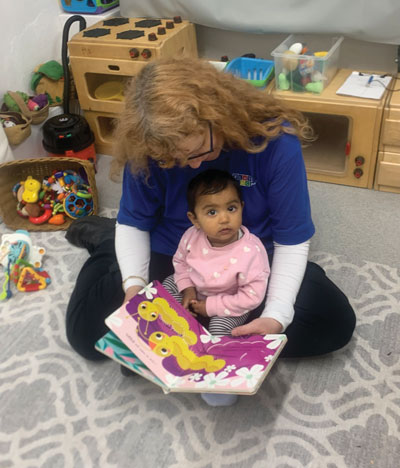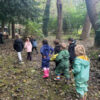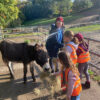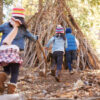
by Marsha Dann
Lead Teacher, Play B C Preschool
Choosing childcare is one of the biggest decisions a parent can make. Unlike with preschool-age children, where the benefits of socialisation and learning through play are often more obvious, sending a child under two to a setting can feel more emotional and uncertain.
Yet, with more families needing to balance work and care, the expansion of funding and increased awareness of the importance of early childhood development, high-quality provision for babies and toddlers has never mattered more. But what does ‘high-quality’ look like for the very youngest children, and what should parents be looking for?
A different kind of care
Caring for children under two is a vitally important job. The brain is developing at its most rapid rate and the wiring for emotional security, resilience and lifelong learning is being laid.
While environment and resources can enrich experiences, the most important thing to focus on is relationships. Very young children need warm, responsive, attentive adults who can tune into their needs, often when they cannot be expressed in words.
That is why the key person approach is so important. Each child should have an adult who forms a close, secure bond with them, gets to know their routines, and becomes a safe base for them from where they can explore their environment. Babies and toddlers feel safest when they know someone consistent, who is practically and emotionally available is caring for them.
When visiting a setting, ask:
• Who will be my child’s key person?
• What is your approach to settling in?
• How do you respond to children’s emotional needs throughout the day?
Look for teams who talk with genuine warmth and understanding about the children in their care. A well-organised rota or impressive curriculum means little if relationships are not at the heart of practice.
Nurturing the whole child
At this stage, learning does not look like reading or writing, but like exploration, imitation, repetition and lots of sensory play.
Young children develop through hands-on experience: mouthing, banging, pouring, crawling, climbing, and observing. Their muscles, coordination and cognitive abilities are all growing rapidly, and a good setting will reflect this through both their environment and adult-child interactions.
The best baby rooms are calm but active, warm but stimulating, and above all safe. Look for open-ended materials like baskets of natural objects, age-appropriate books, softplay zones, cause-and-effect toys and spaces for messy or sensory play. Outdoor access is especially valuable for crawlers and toddlers to explore safely in the fresh air.
Flashy equipment or over-stimulating gadgets are not necessary, babies will thrive on real-world experiences, warm conversation, and repetition.
Ask:
• How do you plan for children’s individual interests and development?
• Do babies go outside every day?
• What types of sensory and physical play do you offer?
Feeding, napping and routines
Consistency and routine are comforting to under twos, but they also need flexibility and responsiveness. Babies grow fast, and their needs can change rapidly. A good setting will blend a rhythm to the day with personalised routines.
Whether it is bottle-feeding, baby-led weaning, expressing, or adjusting nap schedules, look for a team that listens and works in partnership with you, individuality must be respected.
Ask:
• How do you manage different routines in the same room?
• Can I bring expressed milk / my child’s comforters / familiar sleep cues?
• How will you keep me updated during the day?
Communication is key
For parents of under twos, especially those leaving a baby in childcare for the first time, regular, meaningful communication is essential. Look for settings that prioritise updates, welcome conversation, and invite you into your child’s day. This might include handovers, learning journals, photos, or daily diaries but should always feel two-way, and not be just a formality.
Trust builds when you feel your child is truly known, and that you’re working as a team with their educators.
Staffing matters
Ratios and training are particularly important for babies or young toddlers. Legally, there must be one adult for every three children under two years, but good settings often go beyond minimum standards, especially during busy times of the day.
Equally important is the experience and stability of the team. Young children need familiar faces and confident, skilled adults who understand child development, attachment, and how to support emotional regulation.
Ask about staff turnover, training, and how the team is supported. High quality for under twos is built on a culture of care and continual reflection.
Making your choice
Choosing care for your baby or toddler is deeply personal. Trust your instincts when you visit a setting: Do the adults get down on the children’s level? Is the environment calm but engaging? Do you feel listened to, not just spoken at?
Opt for a setting where relationships, not routines, are at the heart of everything they do and you know your child will be seen, heard, and known.
Marsha Dann, lead teacher at Play B C Preschool, making every day a learning adventure in Wallington and Carshalton.
www.playbc.co.uk
info@playbc.co.uk











